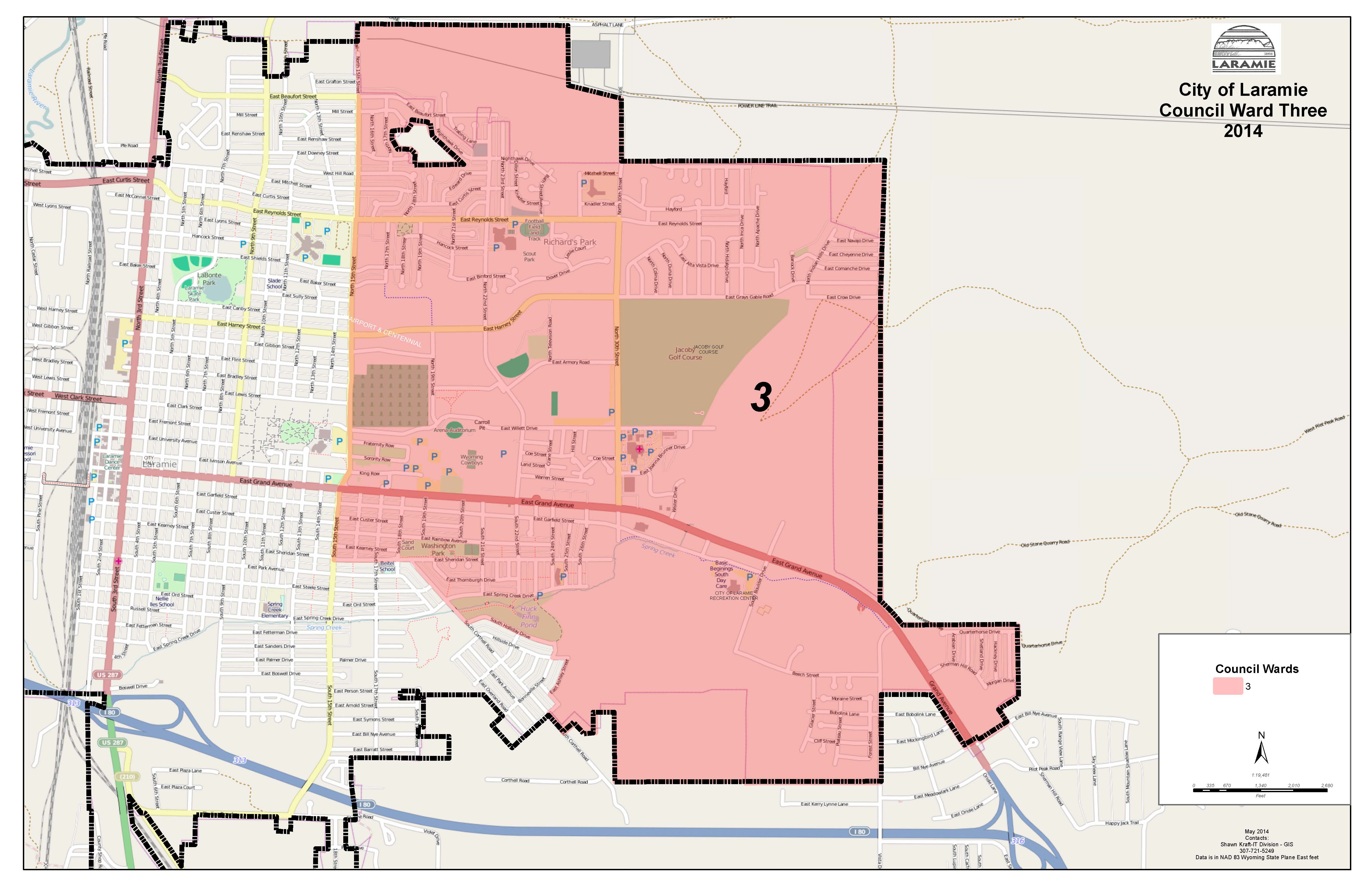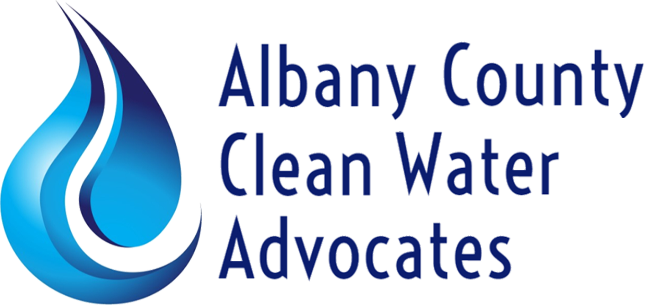
Candidates Karl McCraken, Erin O’Doherty and Bryan Shuster are running for two seats, each for a four-year term (one successful primary election candidate dropped out, leaving three candidates for the two seats). Candidate responses below are rotated, like candidate names on the ballot, so that one candidate is not always first or last.
The Aquifer Protection Overlay Zone (aquifer recharge area) lies mostly in the county, while the Casper Aquifer provides about half the drinking water for the vast majority of county residents who live in or near the City of Laramie. Recognizing this common interest, the Casper Aquifer Protection Plan began as a joint city-county document.
1. As a City Councilor, would you support returning to a unified Casper Aquifer Protection Plan? Please explain your answer.
KARL McCRAKEN (Ward 3): Yes, we have no other choice. With the change in laws that the cities only control in the county is within a half mile radius AND only for the purposes of street alignment; the city has no effective control, only the county. As such, the city needs to negotiate in good faith, in a non-threatening manner. Only then can the city have any say. The city and county must talk with one another in a manner that BOTH are heard. Much of this would be alleviated by the land purchase by the county.
ERIN O’DOHERTY (Ward 3): I absolutely support a unified aquifer protection plan. We have to find a way to work with the county since they have jurisdiction over that area. We really have to have our county commissioners understand that most of their constituents rely on that water, so it makes sense to plan with the city.
BRYAN SHUSTER (Ward 3): I fully support a unified Casper Aquifer Protection Plan and have voted in favor of this during my former term. I believe unifying the city and county in the Casper Aquifer Protection Plan would greatly benefit the city of Laramie. Unfortunately, not all my fellow council members share my opinion. I believe that unifying the city and county in protecting our water supply and providing legally binding documentation as guidelines regarding what is permitted in areas that affect the aquifer is the best way to avoid misunderstandings and legal ramifications. In an effort to achieve my goal, I currently serve on the board of county project Pilot Hill which protects a significant amount of the recharge areas of the Casper Aquifer.
2. What do you see as the major issues affecting the Casper Aquifer, and how would you address them?
ERIN O’DOHERTY (Ward 3): I think the major issue is population density exceeding the carrying capacity of that area. Subdivisions that reach a certain density have to eventually come up with a sewer system to avoid contaminating their wells. One can look at west Laramie, south Laramie, south Cheyenne for examples.
BRYAN SHUSTER (Ward 3): My biggest concern is regarding the I-80 Interstate highway. Coming down Pole Mountain, the ditches along the highway all flow into the aquifer. I would address this issue by adding holding ponds, especially in the top two-thirds of the highway coming down Pole Mountain, which in my opinion is the most vulnerable. Holding ponds are necessary in preparation for any spills, especially of any toxic materials, that may result from unfortunate accidents, or human error regarding transportation of such material. These holding ponds would prevent hazardous material from contaminating the aquifer until it can be contained and safely removed. My second most pressing concern addresses the recharge openings in the rock formations on Pilot Hill. The Pilot Hill Committee is attempting to purchase over 5,000 acres that reside over the most vulnerable areas. This will ensure that these areas are protected. The area will be restricted to non-invasive recreation such as horse and bicycle trail-riding and hiking to enforce this protection.
KARL McCRAKEN (Ward 3): Knowledge. There is a study currently being conducted by the county that is drilling collecting points next to many of the leach fields so that the county will have more scientific data as to whether leach fields are the source of pollution, or if the wells themselves are sources of pollution. Sometimes on only wells, the wells themselves act as straws allowing pollution to go to the aquifer. The concrete cap at top or the well lining breaks allowing the well to leak. I had this happen to a well in Laramie county. When I sold the property, the water was contaminated. It was fixed by relining the well casing. Subsequent tests showed no pollution. That one was found by putting a camera down the well and finding a crack in the casing. It appears it could have been caused by someone driving a 4 wheeler into the well casing. It was a fairly quick fix. That is why i voluntarily test samples from all wells I own yearly now. I would suggest everyone do this. It is cheap and also protects the homeowners health should something have occurred. Laramie County health department helped with this. Laramie county has a health department. Perhaps the city health department should be combined into a city/county health department. Such as when there was a joint city/county planning department about 15 years ago. This could also improve communication between the two entities.
3. Are there other city water-related issues you have concerns about? If so, please describe, including how you would approach the issue(s).
BRYAN SHUSTER (Ward 3): The infrastructure within city limits, as well as south of Laramie within the county, is, in my opinion, a water-related issue that concerns me. The water and sanitary sewer in these areas need to be re-evaluated and possibly re-routed so all water is processed through the water treatment plant. This would not only help protect against future damage to the pipes through which our water runs, it would also allow any citizen of Laramie to have access to treated water.
KARL McCRAKEN (Ward 3):
Not necessarily in order:
A. Age of infrastructure. Piping.
B. Making sure enough water leaves through the water treatment plant back to the river to assure no loss of water rights to city.
C. Monolith ranch. Although a great supply of water and possible replacement for other sources by the #1 owner of record on the Laramie River, it would cost more to treat the water, but it is possible should something devastating happen to the aquifer. The water rights on the river are protected and the city and its water attorney do a lot to protect those rights. It would be a shame to waste those rights especially with their high value, both monetary and protectionist. Although the city recently stated during a meeting that they had very little information on the purchase of the ranch and the law suits involved, stop Marion Griffen on the street and ask her. She is one of the last remaining counselors from that time who was involved in the purchase. Sometimes finding out facts of the past requires talking people who were there.
ERIN O’DOHERTY (Ward 3): I’m concerned about old decaying water and sewer lines. Laramie has underfunded infrastructure for years. I’d look for funding in grants but also encourage more inexpensive ways to help us limp along with the old lines we have. There is technology to insert linings in water lines, for example. Storm drainage is a problem because of the flooding of our streets and buildings, and the pollution going into Spring Creek and the Laramie River. The prior Turner Tract development does not appear to have adequate detention ponds. I don’t see a detention pond at the new high school, for example. Additional drainage into Spring Creek will overwhelm the flood control design capacity and once again half of Laramie could be at risk of flooding. We have regulations for storm water control for a reason, and we should limit the number of exceptions to them.
